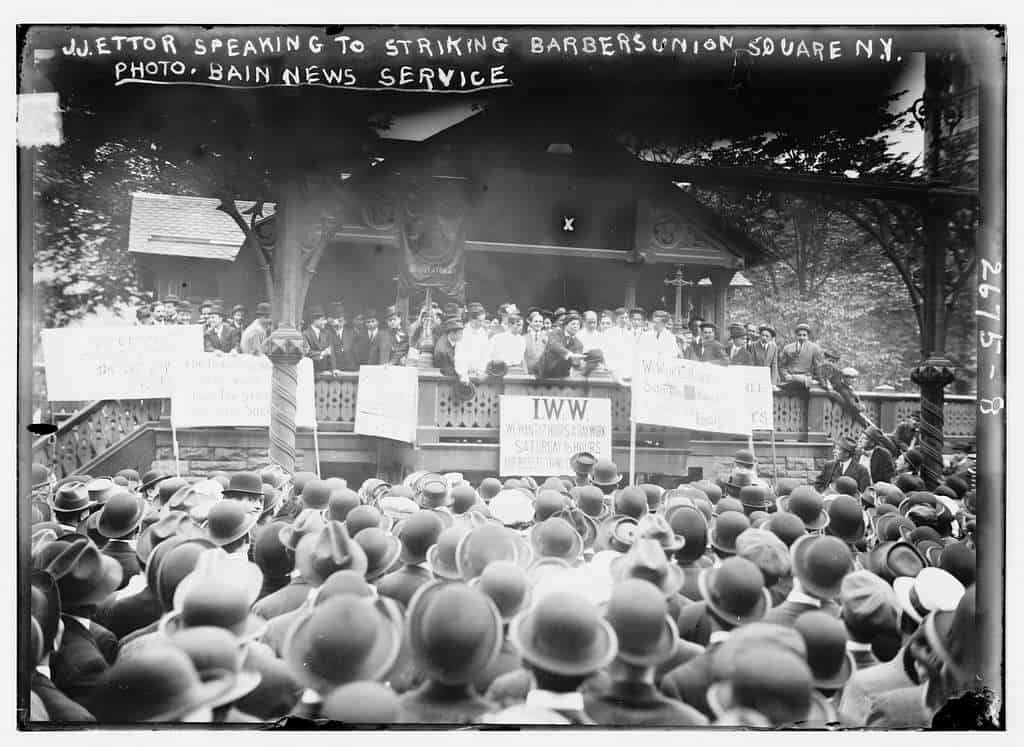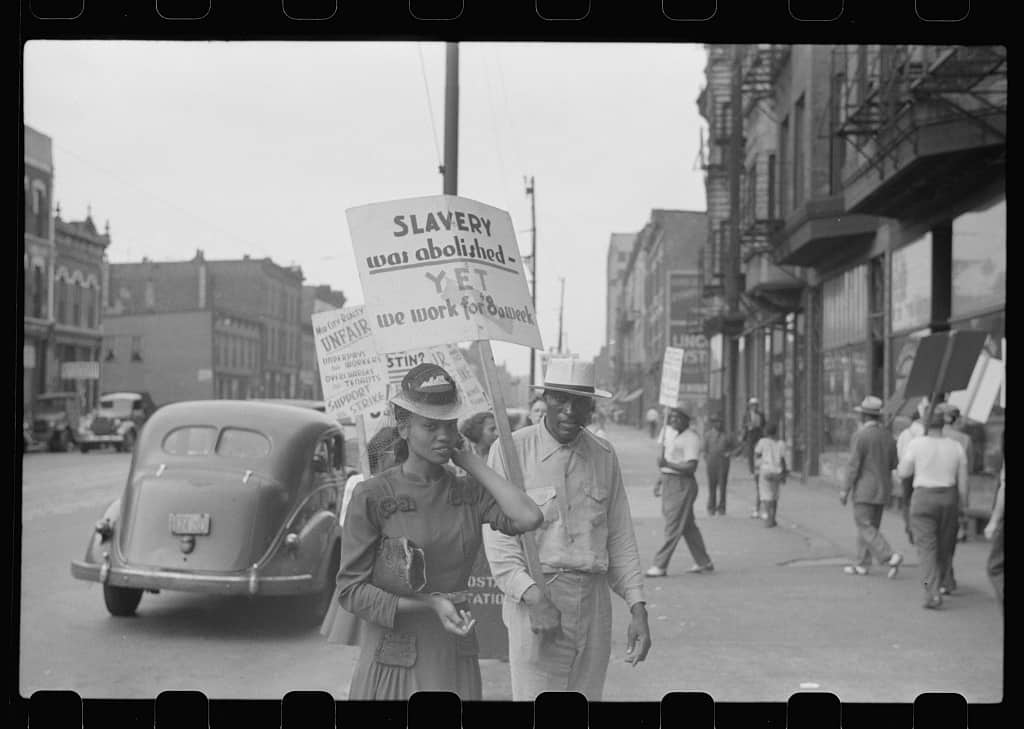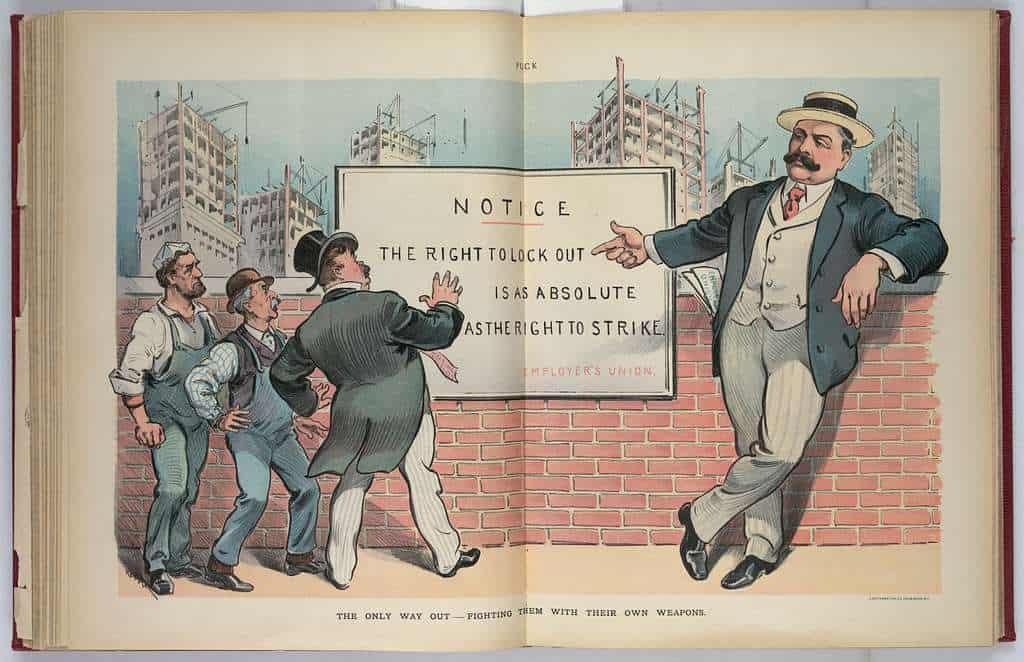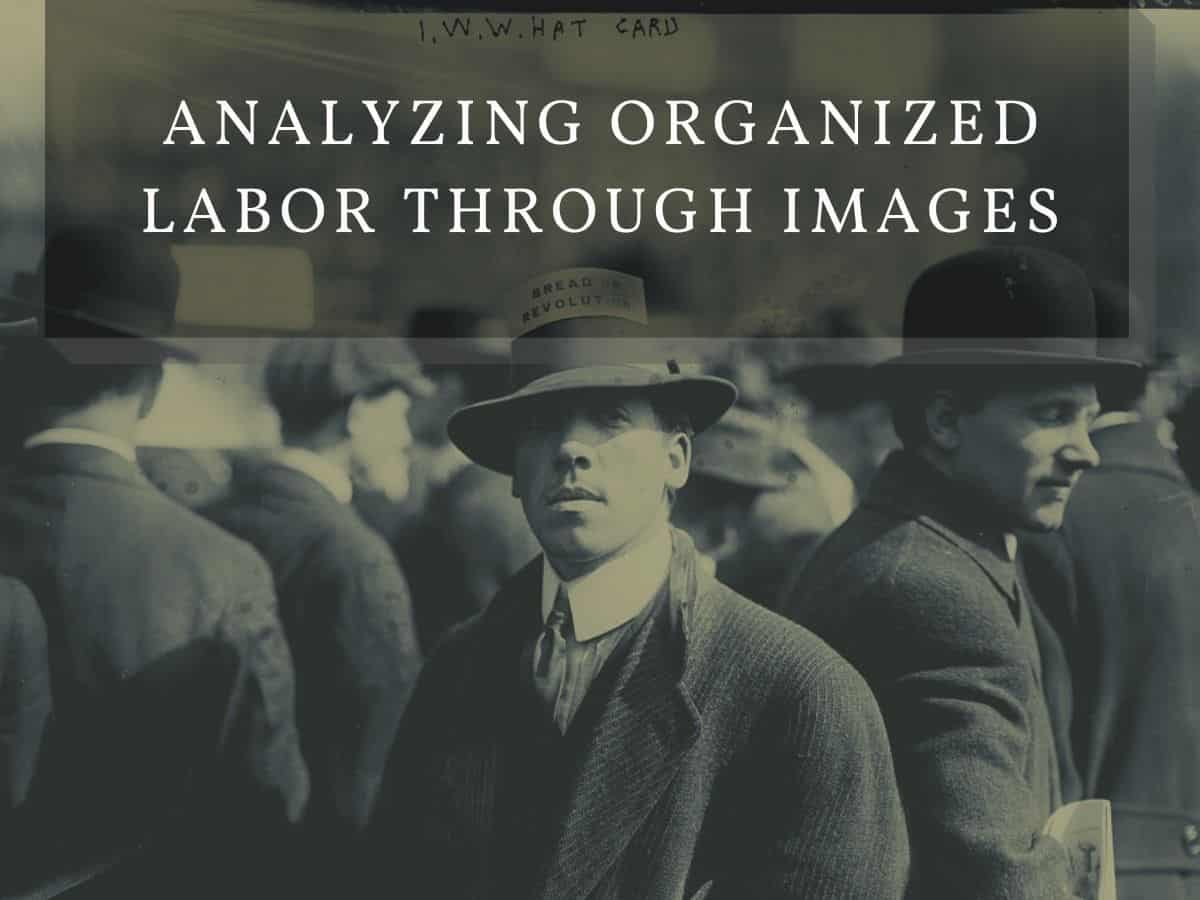
Title: J.J. Ettor speaking to striking barbers – Union Square, N.Y, from the Library of Congress, 05/17/1913
Context: This photo shows labor leader Joseph James Ettor speaking to the Brooklyn barber’s union during the Brooklyn barbers’ strike of 1913. The large sign in the middle of the picture states “I.W.W.” along with demands for specific changes in working conditions in big bold letters. The I.W.W., or Industrial Workers of the World were a labor union group that sought to organize unskilled laborers to advocate for improved working hours, pay and conditions.
Icebreaker prompt: Analyze the image caption. Does it help the viewer understand the image? Create a new caption for the image.
Response: The image caption states what is happening, but could provide more context and agency to the strike. One potential new caption could be “I.W.W. and Brooklyn Barbers’ Union Strike For Better Working Conditions Conditions.”

Title: Picket line at Mid-City Realty Company, South Chicago, Illinois from the Library of Congress, 07/1941
Context: This photo is believed to be of a picket line at the Mid-City Realty Company in South Chicago, Illinois. The photo features strikers holding signs reading “Slavery was abolished – YET we work for $8 a week” and “Mid City Realty Unfair – Underpays his workers. Overcharges his tenants. Support the strike.”
Icebreaker prompt: Brainstorm a list of questions and rank them by your order of curiosity.
Response:
– What are the working conditions like at Mid-City Realty?
– What role did racism play determining how the strikers were treated by their employers?
– How did conditions differ for both male and female employees?
– Why do the workers think they are treated unfairly?
– How much was $8 a week worth during this time period?
– How long did the employees strike, and did they get their demands?
– Who was the owner of Mid-City Realty Company?

Title “The only way out – fighting them with their own weapons,” by Udo Keppler from Puck Magazine, 05/27/1903
Context: This cartoon is titled “The only way out,” by cartoonist Udo Keppler. The caption at the bottom states, “The only way out – fighting them with their own weapons.” The cartoon features a representative of the “Employers Union” gesturing at a “right to lock out” sign, much to the shock of laborers.
Icebreaker prompt: Analyze the bias of the image. How does the arrangement of the image create bias?
Response: The cartoonist is biased in favor of the factory owners and employers. The employer is the focus of the image and is much larger in stature compared to the three employees. Additionally, the cartoon states that locking the employees out is “as absolute as the [workers] right to strike.” The arrangement enforces this bias because while the workers are locked out, construction continues behind the employer.


First off, these are all really awesome images. I also like the icebreakers you used for each one. I’ve been thinking about what other possible icebreakers could have been chosen, and I think these are probably your best options.
One option that would be fun is to have the students redraw the cartoon in the third image to represent an example of contemporary labor issues. Allowing students to dig into what current problems are arising for organized labor and comparing that to the past could also be a good way to encourage engagement with the subject. We all know someone who is either an employee or employer.
Thanks! I like the idea of re-drawing the cartoon to show a different perspective since the bias is so obvious. The sources I chose are a bit older, but I also like the idea of tying this into what is happening right now.
Great selection of images and paired questions.
Labor unions in US have been so weaken over the last 30 years that it would be a great idea to give students the opportunity to see what they once were. Who knew barbers have a union? Wonder if they have one now?
I like your idea of having students research the value of those 1941 dollars, today. That was right on the eve of Pearl Harbor. Would be interesting for students to explore how the government catered to unions once we got into the war.
I love political cartoons and Puck is a great historical source. Tyler’s idea of re-drawing cartoon today would be fun. I don’t remember the last time I’ve even seen a cartoon about current labor conditions.
I’d like to delve into that as well. I am sure there are cartoons about current labor conditions that would be great to contrast! Doing a quick search, this one seems like a candidate: https://www.cartoonstock.com/cartoonview.asp?catref=pfen389
If I were teaching this as an actual lesson I would like students to both find modern examples of labor movements and draw a more up to date cartoon!